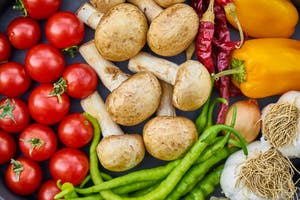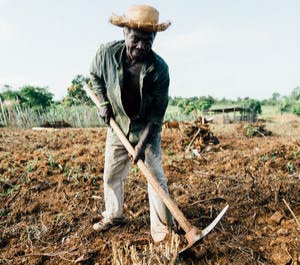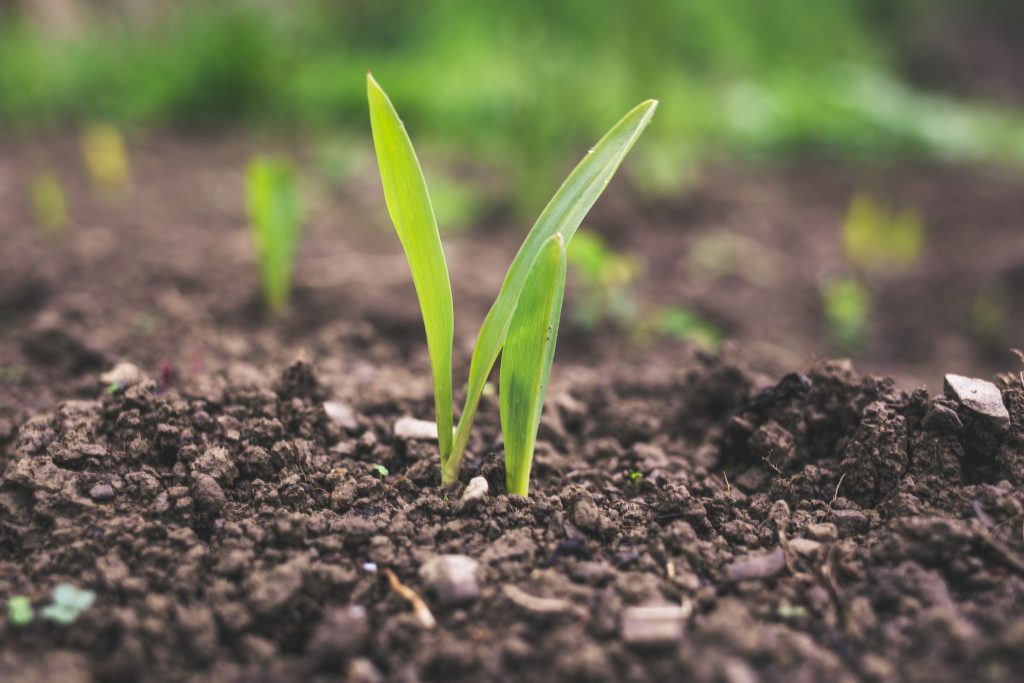What is subsistence farming?
Subsistence farming or subsistence agriculture is a type of farming whereby farmers grow crops and raise livestock just for the maintenance of his family and very little for trade.
It can also be defined as a type of farming in which virtually the harvests as a whole or animals raised are utilized to keep up with the farmer and the farmer’s family, leaving pretty much nothing, if any, surplus available to be purchased or exchanged.
subsistence farming endures today on a moderately wide scale in different region of the world, including huge pieces of sub-saharan Africa Means cultivates normally comprise of something like a couple of sections of land, and homestead innovation will in general be crude and of low yield.
Subsistence farmers target farm output for survival and for mostly local requirements, with little or no surplus.

Examples of subsistence farming
Subsistence farming is the kind of farming done by farmers who have small plots, which are enough only for themselves. Literally, subsistence agriculture means no extra food is produced to sell or trade. If there is any, it’ll be of very low quantity.
Examples include;
- A famer having only one cow which produces milk just enough for the family.
- A small maize farm for the farmer’s family.
- A little tomato garden at the back of the house just to make sauce for the family.
Types of subsistence farming
Subsistence farming in itself can be categorized into two types namely primitive-subsistence farming and intensive-subsistence farming.
Primitive-subsistence farming
It is called primitive-subsistence farming because it follows an approach called ‘shifting-cultivation’ or ‘slash and burn technique’ similar to our primitive ancestors. Under this, patches of land from forests or grasslands are cleared by felling the trees, burning with fire, and preparing the soil. The land is used for a few years until its fertility runs low, at which point a new area is cleared and farming is shifted to that location. Moreover, as shifting cultivation has gradually reduced due to its negative impacts on the environment, primitive-subsistence farming is still present in other forms such as homestead farming in which small gardens or tiny plots of lands are used to grow vegetables and crops using the manures and bio-waste produced by the farmer as fertilizers.
Intensive-subsistence farming
Intensive-subsistence farming however mainly results from a single cause, that land is limited. And as land is passed on from one generation to the next, it is fragmented into smaller plots to divide among the offspring of the farmers. So it goes on getting smaller and smaller until it cannot produce enough to even satisfy the needs of a single family and the farmer uses intensive practices to fulfill production.
Read also: How to control weed in lawns
Characteristics of subsistence farming
- It is usually practiced by subsistence farmers.
- It involves a small area of land.
- This type of farming allows the use of local farm implements like hoes, cutlasses, etc.
- No specialization is required.
- Employment of unskilled labor is popular.
- The harvest returns are minor as it is just for the family alone.
- subsistence laborers are mostly family members.
- The mainly production involves the production of food crops alone.
- The basic needs of the family is mostly in focus.
- There is hardly or no extra/surplus for sale.
- A mixed system of farming is usually experienced.
Advantages of subsistence farming
This type of farming, despite small, have got some benefits, lets look at them.
1. No investment required
Farmers normally seek investments for commercial farms and farm projects not for something that’ll just feed the family. This is an advantage because you won’t have to worry about ROIs just provide food for the family and everyone is happy.
2. It is cheap and cost effective
This is one of the common advantages of subsistence farming. The tools and implements for farming are very cheap to purchase. There is no requirement for investments as would have been needed by a commercial farmer is the prime reason for its cost effectiveness.
3. Not labor intensive
For a subsistence farm, a lot of labor is not needed, as the farm work can be shared among family members. The farmland isn’t a big one for sure, so work can easily be dispersed or shared among family members.
4. The family’s food source
Most subsistence farmers practice mixed cropping, so there’s in most cases something from the farm to be eaten, especially vegetables. Subsistence farming provides food for the family.
5. High quality products
Farmers harvest high quality products because a large number of chemicals (pesticides, insecticides, herbicides etc.), are not used. Pest and disease infestations are rampant on commercial farms and reduced in subsistence farms. Farmers in most cases do not have to worry about pest.
Read also: Breeds of cattle
6. Source of employment
No special skill is required to become a subsistence farmer, all that is required is the ability to handle the tools i.e. hoe and cutlass and to do farming and plantation according to the traditional timing of the area. For this reason, it is easy for planters to become subsistence farmers.
7. Rural-urban development
There are people who have lived in the villages and have depended on subsistence farming for ages. Such people do not see why they must move to the cities and live in deplorable conditions since they cannot afford adequate accommodation. They prefer to stay back in the villages and make do with the little they can get from the land. Such a decision helps them to remain in the villages thereby checking rural-urban drift.
8. Saves foreign exchange
The farming implements that are needed for subsistence farming can be acquired on the local market since they are locally produced. There are local blacksmiths who can manufacture such simple implements. There is therefore no need for government to use scarce foreign resources to import them. Such monies are therefore expended on more pressing national needs.
Read also: Commercial farming
Disadvantages of subsistence farming
With the pros, this type of farming also have disadvantages, let’s look at them.
1. It is often seasonal
One of the disadvantages of subsistence farming is that it depends on the rain to do well. For this reason, farming activity is restricted only to the rainy season. Sometimes the rain may fail leading to great loses to the people.
2. Limited production
The farm activity is mainly on personal or family lands held by individuals therefore the farmers are unable to produce much. They produce only to feed their own families. Not much contribution is done towards national production of crops.
3. There’s no room for profit making
The level of production is very low, intended to feed only the family. If any surpluses are sold to other people, it is not to make any meaningful profit. It is only to make ends meet. So subsistence farming does not lead to financial profits in the real sense.
4. Cannot take advantage of increased demands
Another disadvantage of subsistence farming is that the farmers cannot take advantage of an increased demand for their produce. The reason is that they can’t produce so much and therefore even if the demand for their product increases, they can’t take advantage of it. Their output is constantly low.
5. Not attractive to investors
Private entrepreneurs enter farming for business purposes. Their aim is to make profits. This being so, they are not attracted to subsistence farming. This is because there is no profit to be made. They prefer to engage in large commercial farming.
Read also: Daily routine of a farmer
The bottom line
Subsistence agriculture can be used as a poverty alleviation strategy, specifically as a safety net for food-price shocks and for food security. Poor countries are limited in fiscal and institutional resources that would allow them to contain rises in domestic prices as well as to manage social assistance programs, which is often because they are using policy tools that are intended for middle and high income countries.
Low-income countries tend to have populations in which 80% of poor are in rural areas and more than 90% of rural households have access to land, yet a majority of these rural poor have insufficient access to food. Subsistence agriculture can be used in low-income countries as a part of policy responses to a food crisis in the short and medium term, and provide a safety net for the poor in these countries.
PLEASE SHARE

